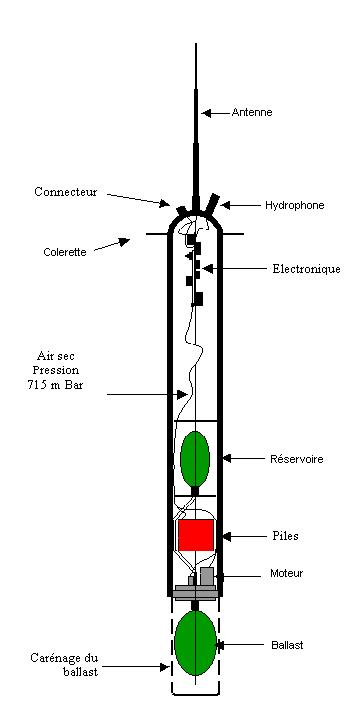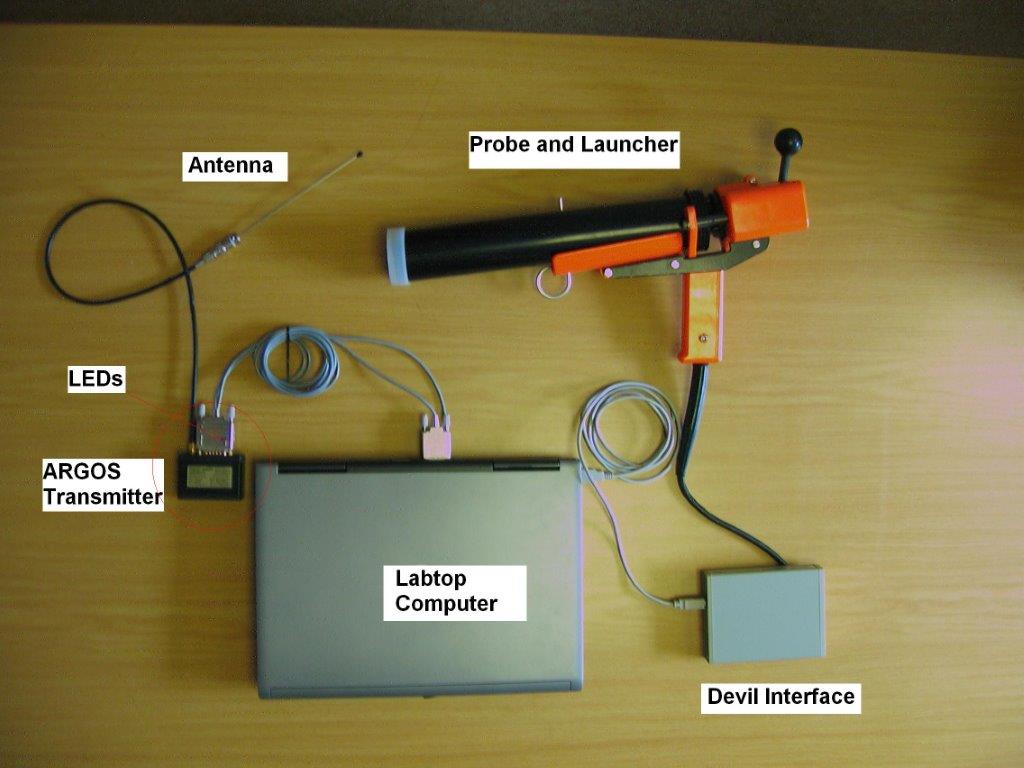Pressure
Type of resources
Available actions
Topics
Keywords
Contact for the resource
Provided by
Years
Formats
Representation types
Update frequencies
status
Scale
-

The RAFOS float technique (the reverse acronym of SOund Fixing And Ranging) is used to obtain sub-surface trajectories of floats by acoustic location. These floats are immersed at a constant depth and drift with the body of water in which they are immersed. The floats record the arrival time of the sound signals emitted by a network of fixed acoustic sources placed on moorings. They regularly come to the surface to transmit the data that they have recorded.
-

X : eXpendable; B : Bathy; T: Thermograph. Thermal profile measurement with real-time transmission
-

The DBCP – Data Buoy Cooperation Panel - is an international program coordinating the use of autonomous data buoys to observe atmospheric and oceanographic conditions, over ocean areas where few other measurements are taken. DBCP coordinates the global array of 1 600 active drifting buoys (August 2020) and historical observation from 14 000 drifting buoys. Data and metadata collected by drifting buoys are publically available in near real-time via the Global Data Assembly Centers (GDACs) in Coriolis-Ifremer (France) and MEDS (Canada) after an automated quality control (QC). In long term, scientifically quality controlled delayed mode data will be distributed on the GDACs. Disclaimer: the DB-GDAC is under construction. It is currently (January 2020) aggregating data from the Coriolis DAC (E-Surfmar, Canada). Additional DACs are considered. An interim provision from GTS real-time data to GDAC may be provided from Coriolis DAC.
-
CTD data collected during the French oceanographic cruises or joint programs.
-
French national archive (SISMER) of time series data, particularly current meter and thermistor data.
-

The observations of campe glider on imedia deployment (Mediterranean Sea - Western basin) are distributed in 4 files: - EGO NetCDF time-series (data, metadata, derived sea water current) - NetCDF profiles extracted from the above time-series - Raw data - JSON metadata used by the decoder The following parameters are provided : - Practical salinity - Sea temperature in-situ ITS-90 scale - Electrical conductivity - Sea water pressure, equals 0 at sea-level
-

From 2015 to 2018 five field experiments (9 legs) have been performed in the Western Mediterranean Basin during winter or early spring. Thanks to the intensive use of a towed vehicle undulating in the upper oceanic layer between 0 and 400 meter depth (i.e. a Seasoar), a large amount of very high resolution hydrographic transects have been performed, to measure the mesoscale dynamics (slope current and its instabilities, anticyclonic eddies, sub-mesoscale coherent vortices, frontal dynamics convection events, strait outflows) and sub-mesoscale processes like stirring, mixed layer or symmetric instabilities. When available, the data were completed with velocities recorded by Vessel Mounted Acoustic Doppler Current Profiler (VMADCP) and by surface salinity and temperature recorded by ThermosalinoGraph (TSG). Some CTD casts have also been performed giving the background hydrography of the deep layers. In 2017, a Moving Vessel Profiler (MVP) has been deployed to manage even higher horizontal resolution. This data set is an unprecedented opportunity to investigate the very fine scale processes as the Mediterranean Sea is known for its intense and contrasted dynamics. It should be useful for modellers (who reduce the grid size below a few hundred meters) and expect to properly catch finer scale dynamics. Likewise, theoretical work could also be illustrated by in situ evidence embedded in this data set.
-

The Greenland-Portugal A25 OVIDE line is carried out biennially since 2002. The section is composed of 98 stations where hydrographic, biogeochemical and current measurements are carried out down to the bottom. OVIDE is a contribution to the international programs Go-Ship, IOCCP, and CLIVAR. This data set contains the final (adjusted) CTDO2 data.
-

This dataset is an aggregation of all availale in situ data from Coriolis and Copernicus in situ data centres, observed in the French DCSMM area. It contains 5167 NetCDF CF files from 1903 to 2017. Each file contains the observations of a specific platform (e.g. vessel, mooring site, sea level station). Observed parameters are temperature, salinity, pressure, oxygen, nitrate, chlorophyll (and other bio-geo-chemicals), current, wave, sea level, river flow.
-

ARVOR-C is a subsurface profiling float designed to operate in coastal environments and to perform oceanographic measurements like a moored installation. Its design has been improved to reduce its drift thanks to a seabed claw and anti-drift claws, an optimized profile speed (~ 25 cm / s) and a short-period data transmission. It is able to process more than 300 profiles and real-time data transmission via Iridium satellite system.
 Catalogue PIGMA
Catalogue PIGMA